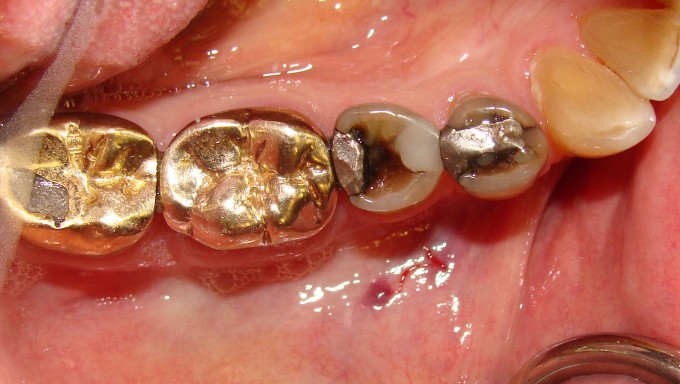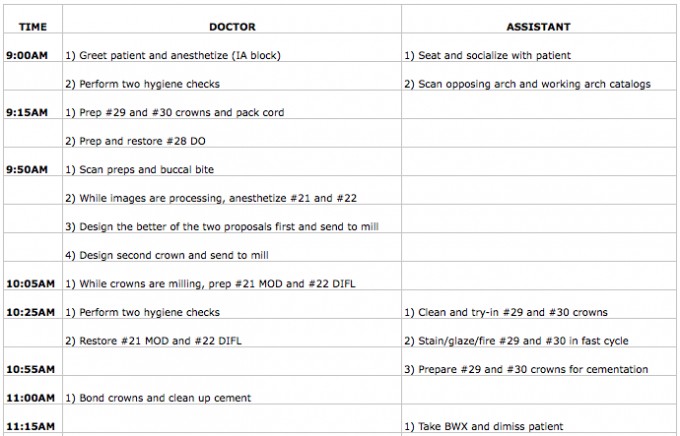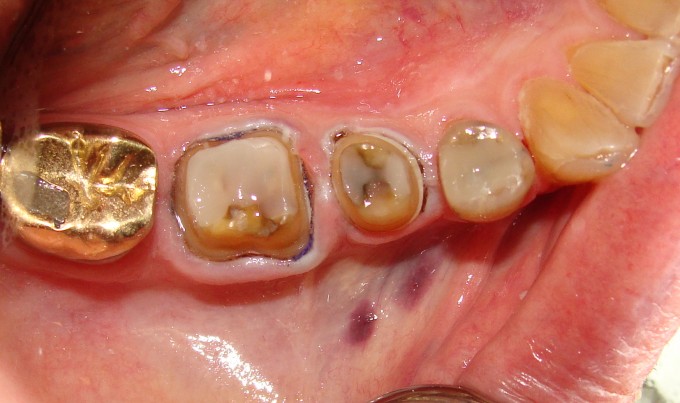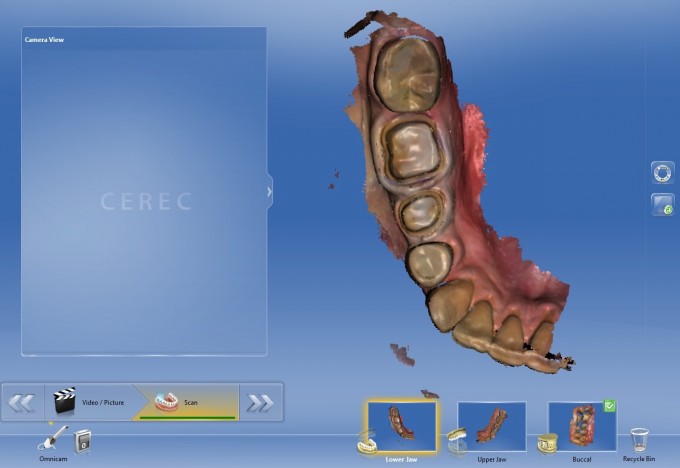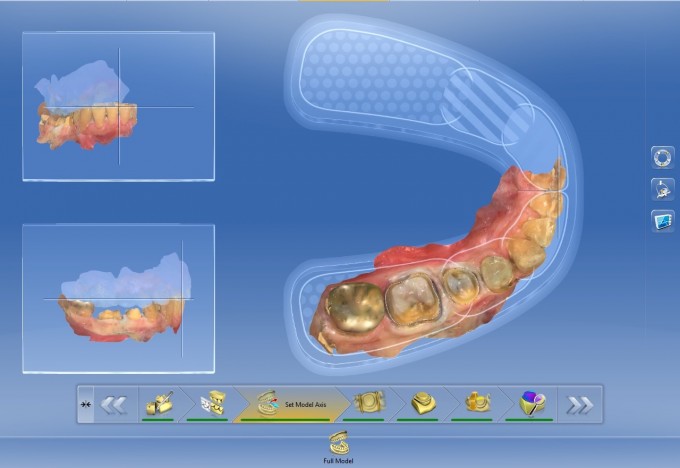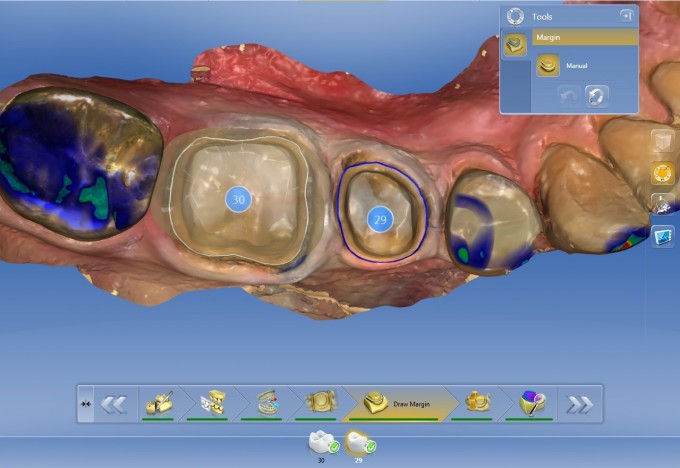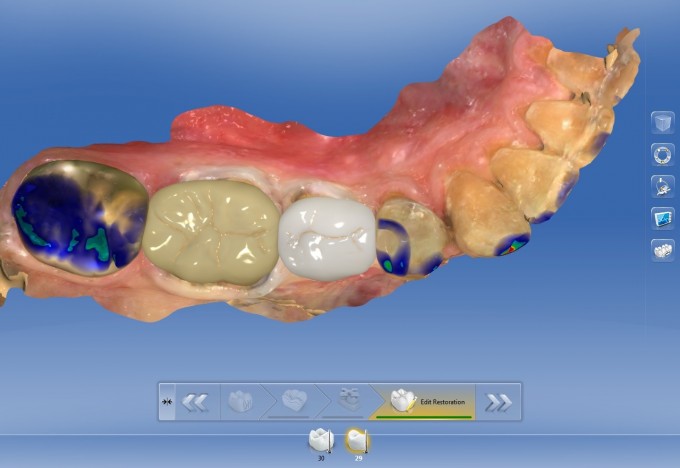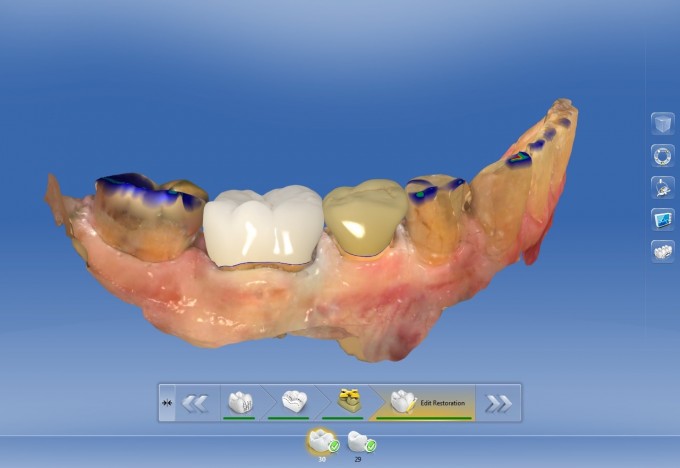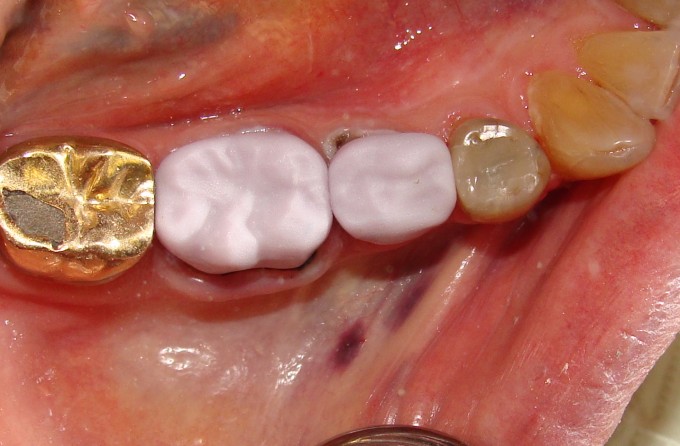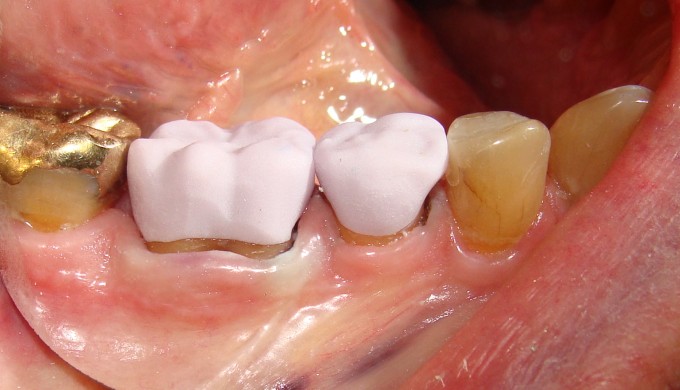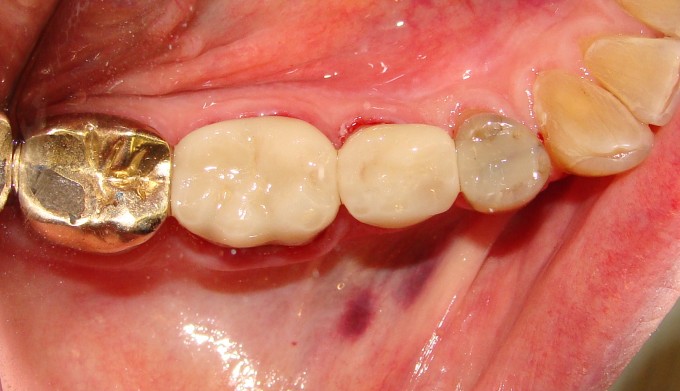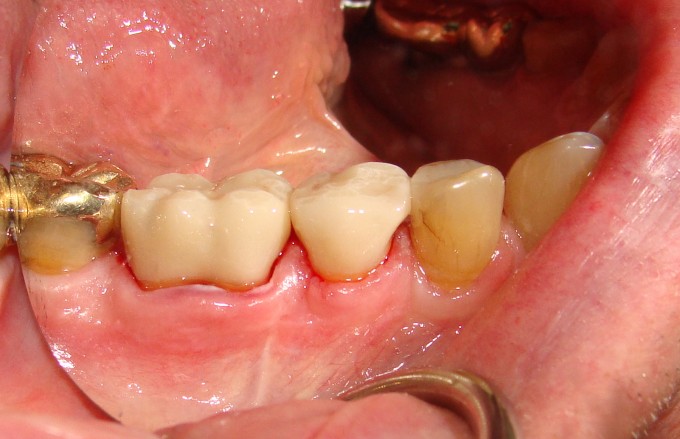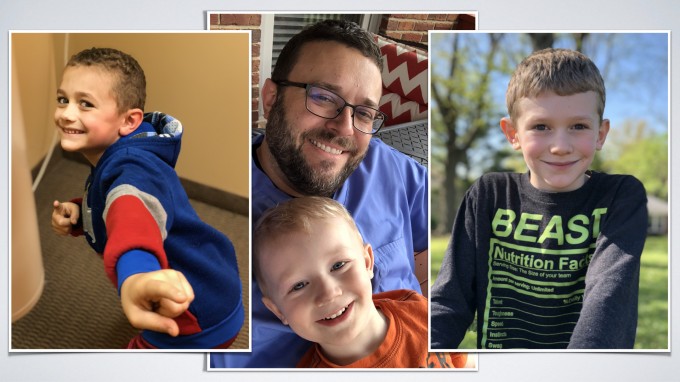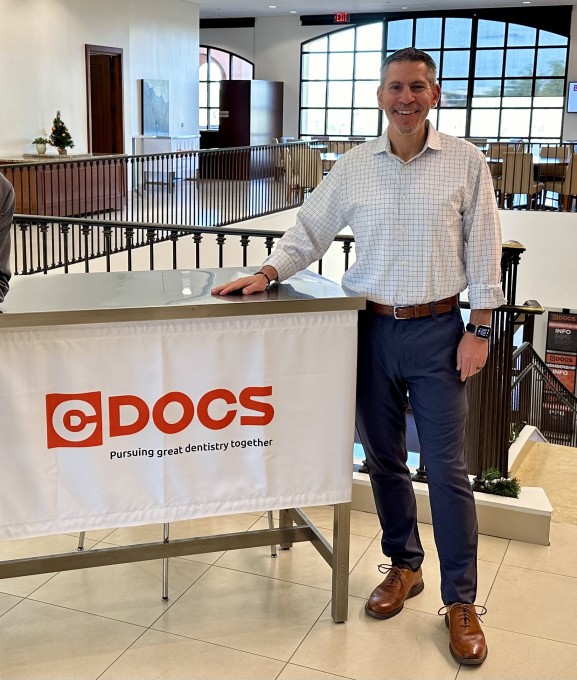Profitability and Efficiency with Quadrant CEREC Dentistry
Are you quadrant CERECing? The single CEREC restoration is a very productive and profitable procedure in our practices. But, the profitability increases exponentially when we begin to perform a quadrant of CEREC restorations or treat additional restorative needs during the same appointment.
In my practice, a single-unit CEREC restoration that is fired may take around 1.5-2 hours depending on the case, but adding an additional CEREC restoration only adds about 30 minutes to the overall appointment time while doubling the production. In other cases where a patient only needs a single-unit CEREC restoration while needing direct composites, the appointment time may not change since the milling and firing times can be leveraged.
Here is an example of a quadrant CEREC case I completed last week. This 80 year-old patient had decay on #21 and #22 (not pictured) and failing restorations on #28, #29 and #30. The treatment plan included: #21 MOD composite (not pictured), #22 DIFL composite (not pictured), #28 DO composite, #29 full-coverage crown and #30 full-coverage crown. Emax LT, shade A4 was used to restore #29 and #30 although I could have used a C or D shade if I had it. The entire procedure took 2 hours and 20 minutes and produced around $2800.
Here is the overall timeline detailing my role and my assistant's role for this particular procedure.
Always scan the teeth past the midline to the contralateral central for the best proposals with regards to anatomy, contours and marginal ridge heights.
When treating 2 or more teeth with the CEREC, make sure to marginate all the preps before moving forward and always double check that you've marginated the correct tooth.
Once the CEREC proposes the restorations, choose the restoration that is closest to being finished with regards to design. That way, it is sent to the mill as soon as possible and the next restoration can be designed. For this case, in my opinion, #30 appeared to require less design work, so I started with this crown first and sent it to the mill.
After the first restoration's design is finished and sent to the mill, begin designing on the second restoration to leverage the milling time.
Here is the final design of both restorations.
The restorations were tried-in after milling to make any adjustments to the contacts.
Here is the final photo of the restorations bonded and delivered.
There are many different ways to be efficient when treating a quadrant of CEREC restorations such as having an extra milling unit, delegating aspects of the CEREC workflow to the assistant, treating additional restorative needs, using the Ghost Contact Technique, etc. If you've been intimidated to use the CEREC for multiple units, set a timeline with your team outlining what you will be doing, what your assistant will be doing, if any hygiene checks are needed, etc. Level 4 also teaches how to be efficient with quadrant CEREC dentistry.
Great post! Wonderful step-by-step instruction and reasoning behind it. Outstanding. It's no wonder you're flying all over the country as a speaker/advocate for this technology.
Well documented and presented. Come up to my place, we keep C and D shades in stock. LOL
Agree 100%, we do this every day in my practice. The more work we can do on a patient in a single visit, the happier EVERYONE is!



